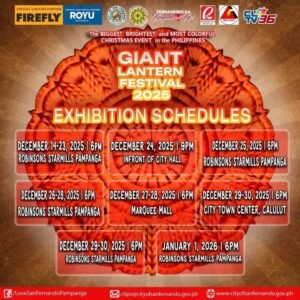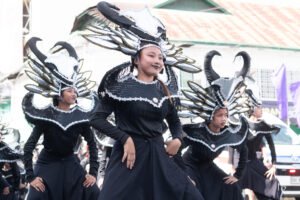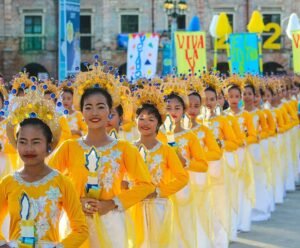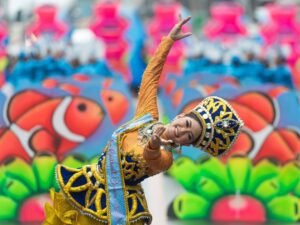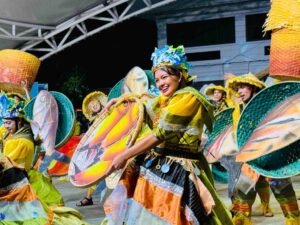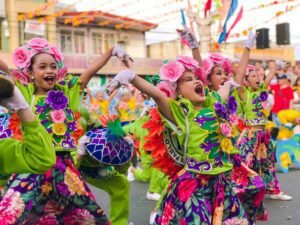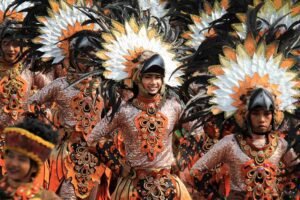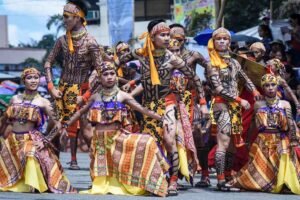The Philippines Travel Guide
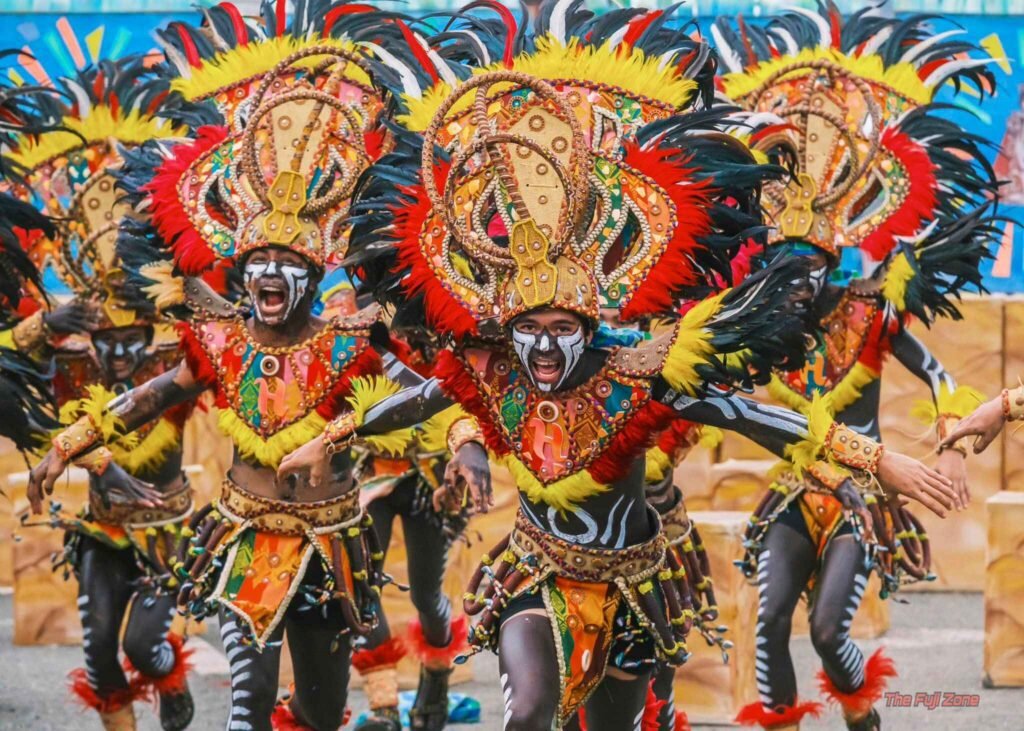
The Philippines Festivals
Ultimate Guide To Hot Air Baloon Festival
Ultimate Guide to Kaamulan Festival
Ultimate Guide to Pahiyas Festival
Ultimate Guide To Panagbenga Festival
Ultimate Guide to Sinulog Festival
Ultimate Guide to Giant Lantern Festival
Ultimate Guide To Ati-Atihan Festival
Ultimate Guide to Ibalong Festival
Ultimate Guide to Moriones Festival
Ultimate Guide to Peñafrancia Festival
Ultimate Guide to Sandugo Festival
Ultimate Guide to Tuna Festival 2025 in Gensan
Ultimate Guide to Obando Festival
Ultimate Guide to Bangus Festival
Ultimate Guide to Coconut Festival
Ultimate Guide to Songkran Festival
Ultimate Guide to Pintados Festival
Ultimate Guide to Bambanti Festival
Dinagyang Festival in Iloilo City 2025
Ultimate Guide to Higantes Festival
Ultimate Guide to Lanzones Festival
Ultimate Guide to Masskara Festival
Ultimate Guide to Kadayawan Festival
Ultimate Guide to Lanzones Festival
Overview of the significance of "Fiesta in the Philippines"
The “Fiesta in the Philippines” is a vibrant and integral part of the country’s cultural fabric. Each fiesta, with its unique theme and set of traditions, reflects the rich history and diverse cultural heritage of the Philippines. These celebrations, deeply rooted in both religious and secular traditions, are held in honor of various patron saints, historical events, and local legends, showcasing the strong community spirit and the joyful nature of the Filipino people.
History of Fiesta in the Philippines
- The “History of fiesta in the Philippines” dates back to the pre-colonial period, when indigenous tribes celebrated seasonal events and harvests with rituals and communal gatherings.
- With the arrival of Spanish colonizers in the 16th century, these indigenous practices were integrated with Catholic traditions, leading to the development of the modern fiesta.
Fiesta Traditions and Practices
- Traditional dances like the “Pandanggo” and “Tinikling” are performed, often accompanied by live music played on indigenous instruments.
- Participants don elaborate costumes, often inspired by historical or mythical themes, adding to the festive atmosphere.
Fiesta Foods and Delicacies
No fiesta in the Philippines is complete without a feast. Traditional dishes such as lechon (roast pig), pancit (noodles), and various kakanin (rice cakes) are prepared and shared among family and friends.
What Makes Philippine Fiestas Unique?
Philippine fiestas are more than just celebrations; they are a way of life. Each fiesta is a reflection of the unique identity of the town or region hosting it. Here’s what sets them apart:
- Religious Devotion: Many fiestas are held in honor of patron saints or religious events. For example, the Sinulog Festival in Cebu pays tribute to the Santo Niño (Child Jesus), while the Pahiyas Festival in Quezon celebrates a bountiful harvest offered to San Isidro Labrador.
- Cultural Showcases: Traditional music, dances, and local delicacies take center stage, offering visitors a glimpse into the region’s rich heritage.
- Community Spirit: Fiestas are not only for locals but also for guests, where everyone is welcomed with open arms, showcasing the Filipino value of bayanihan (community cooperation).
Tips for Enjoying a Fiesta
- Plan Ahead: Fiestas attract large crowds, so book accommodations and transportation early.
- Immerse Yourself: Don’t just watch—join the street dancing and community activities.
- Dress Comfortably: Festivals often involve long walks and outdoor events, so wear breathable clothing and comfortable footwear.
- Respect Local Customs: Many fiestas have religious roots, so observe proper decorum during processions and rituals.
Fiesta in the Philippines: A Celebration of Culture and Community
The Philippines is renowned for its vibrant and colorful festivals, locally known as fiestas, which are deeply rooted in history, religion, and community traditions. These grand celebrations, marked by lively parades, elaborate costumes, and sumptuous feasts, are a testament to the Filipino spirit of joy and hospitality.
What is Fiesta in the Philippines?
A fiesta in the Philippines, commonly referred to as a “Fiesta in the Philippines,” is a community-wide celebration that typically honors a patron saint or commemorates a significant local event. These fiestas are characterized by colorful decorations, lively street parades, traditional music and dances, and communal feasts.
Top 10 Fiestas to Experience in the Philippines
-
Sinulog Festival
- Where: Cebu City
- When: January
- Highlight: A grand religious and cultural celebration in honor of the Santo Niño (Child Jesus), featuring vibrant street parades, traditional dances, and drumbeats that echo through the city.
-
Ati-Atihan Festival
- Where: Kalibo, Aklan
- When: January
- Highlight: Known as the “Mother of All Philippine Festivals,” this event is famous for its high-energy street dancing and participants donning indigenous-inspired body paint and costumes.
-
Dinagyang Festival
- Where: Iloilo City
- When: January
- Highlight: A dynamic festival showcasing synchronized dances and theatrical street performances celebrating the Santo Niño and Iloilo’s cultural heritage.
-
Panagbenga Festival
- Where: Baguio City
- When: February
- Highlight: The “Festival of Flowers” features spectacular floral floats, street dancing, and a celebration of the blooming season in the cool highlands.
-
Moriones Festival
- Where: Marinduque
- When: Holy Week (March/April)
- Highlight: A visually captivating festival with locals wearing elaborate Roman soldier masks and costumes, reenacting the story of Saint Longinus.
-
Pahiyas Festival
- Where: Lucban, Quezon
- When: May
- Highlight: Houses are adorned with colorful decorations made of rice wafers, fruits, and vegetables as an offering to San Isidro Labrador for a bountiful harvest.
-
Kadayawan Festival
- Where: Davao City
- When: August
- Highlight: A thanksgiving festival celebrating Davao’s cultural heritage and abundance, with floral floats, street dancing, and a showcase of Mindanao’s indigenous traditions.
-
MassKara Festival
- Where: Bacolod City
- When: October
- Highlight: Known as the “Festival of Smiles,” this event features vibrant masks, street parties, and lively dance performances, symbolizing the resilience and happiness of Bacolodnons.
-
Higantes Festival
- Where: Angono, Rizal
- When: November
- Highlight: Giant papier-mâché figures parade the streets in celebration of Saint Clement, the town’s patron saint, accompanied by music, dancing, and splashing of water.
-
Giant Lantern Festival
- Where: San Fernando, Pampanga
- When: December
- Highlight: Known as the “Christmas Capital of the Philippines,” this festival showcases elaborate and brightly lit lanterns in a dazzling display of craftsmanship and holiday spirit.
Religious and Cultural Aspects of Fiesta in the Philippines
Cultural elements and community involvement in fiestas
- Fiestas are a time for communities to come together, with local residents actively participating in organizing and performing various activities.
- Cultural showcases, such as folk dances and local crafts, are often highlighted during the celebrations.
Stay Connected:
Subscribe to our newsletter for exclusive travel insights, deals, and updates. Join our community of travel enthusiasts and stay connected with the latest from our blog.
Follow us on social media for daily inspiration and updates on mountain climbing in the Philippines:
Contact Information:
- Email: travel.ph@lakbaypinas.com
- Phone: 09260******
- Address: Marikina

